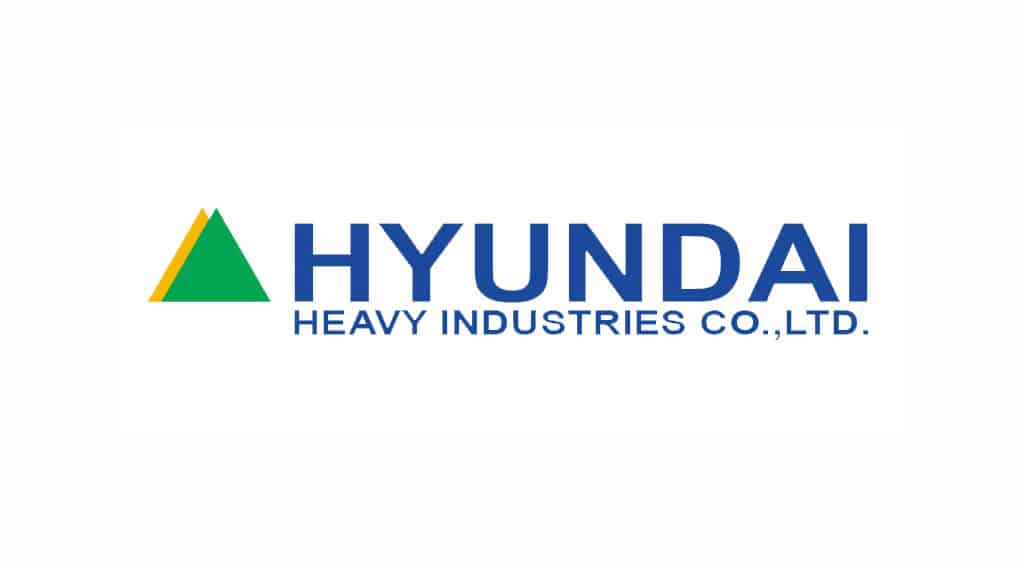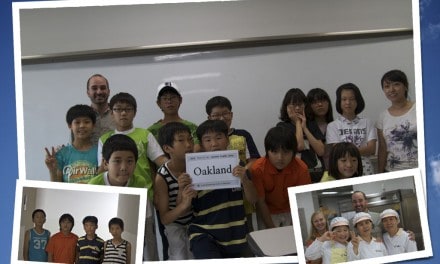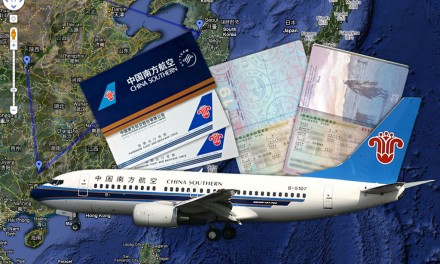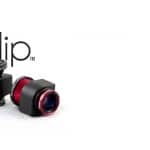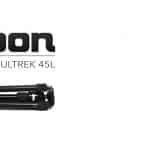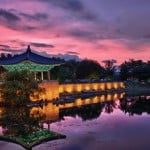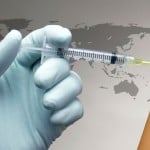We recently had the pleasure of touring one of the largest factories in the world, right in our own back yard. We can literally see directly into Hyundai Heavy Industries(HHI), the world’s largest ship building and repair facility, from the rooftop of our apartment building. HHI produces 15% of the ships in the entire world!
Upon meeting up with the Lee family, our hosts for the day, we were driven into the main gate of HHI, a place usually off limits for visitors. We were clued into the enormity of the place when Mr. Lee had to grab a map of the factory that listed several tour routes. He needed to be sure he wouldn’t lead us into a restricted area. We were also assured that photography of any kind is not permitted.
We actually went on two tour routes, so we were able to see almost everything available. We started by taking a left just past the main gate, which led us past several docked shipped that are in various stages of the building process. Each of the ships we passed by were representing different countries. We saw ships that are destined for Greece, Japan, China, France, Italy, The Philippines, and the United States, among others. At the time we visited, there were around 25 ships docked there.
As we continued on, we were diverted briefly from our route as we had to detour around a duel-controlled 600ton ground transporter toting a heavy load of metal that will eventually compile the interior of one of the ships being constructed. We were amazed at the size of the transporter, but were awed by the site of the huge 1260ton orange construction crane. The cranes are actually so large, that they can only be moved via factory wide rail system. We were stopped by the crane movement both going and coming back from the left side of the factory. HHI employs several such cranes, that can actually be viewed from the street, even above the large privacy wall that surrounds the entire ship yard.
As we wound around the factory, we noticed that even though it was Sunday, many workers were still present. Mr. Lee told us that the workers we saw were only a fraction of those employed by HHI. A total of around 45,000 people, including around 1,500 foreigners, report to work each day inside the huge shipyard. As a result, only certain people are allowed to drive their cars inside. This explained the thousands of scooters that pour from the gates every evening as the work-day comes to a close.
To accommodate the thousands of workers who would rather not leave the area for lunch, approximately 65 restaurants also reside in the yard. Once a year during a national holiday, about 40,000 chickens are used to prepare a special meal.
Coming around the back of the factory and traveling toward the right side, we passed by some ships that had been hoisted up on cranes for repairs. There are 10 such dry docks used for these purposes. We were permitted to get out of the car to get a better look at one of the docked ships, which I believe is not usually allowed. This particular ship is called the Prince Rupert, which will eventually make its way back to Hong Kong. The site of the huge propeller made Griffin wish he had been able to bring his camera. This particular prop measured about 20-25 feet and had been buffed to a high brass shine. Peering over the structure caused Mr. Lee’s young daughter and her friend to exclaim that they were too afraid to look down any longer.
We got back in the car and were lead by the engine room, where, again, we were allowed to get out and go into the shop where the engines are being constructed. The engine in plain view in front of us was easily 3 times the size of our apartment. Another, mostly covered, was even larger. Hyundai boasts the title of the first company in the world to reach the milestone of having produced 100 Million BHP (Brake Horse Power or Horsepower) in their engines over the past 40 years.
Our next stop was Mr. Lee’s office, where we saw a map of HHI and his daughter was able to see where her dad works for the first time. (This was the only place we were allowed to take photos.)
Next door, we were able to get a glimpse of the giant propellers in production. Several propellers were stationed around the warehouse, some rough cuts, others in the process of being machined, etc. We were not allowed into the building because of the safety codes, but were able to see in through the doorway. Adjacent to us on the outside wall, were signs stating the safety requirements: Wear a hardhat, safety glasses, ear plugs, coveralls, safety shoes, and gloves. I believe that pretty well covers all basics.
Finally we headed out of the main gate. As we turned back toward Mr. Lee’s home, we drove past the multiple miles-long factory wall with a new sense of wonder about the place behind it, fascinated by the logistics of it all. Even without photos, I know this tour was something we will never forget.
See HHI and Hyundai Car Factory on a map here.
Live in or Visiting Ulsan? Want to go on a Tour Yourself?
The best way we know of for most people to go on a tour is to go on the Ulsan City Tour. Currently they offer tours Tuesday through Sunday around Ulsan. If you want to see the Car Factory you can go on the tour on Wednesday or Friday and the Ship yard is on the Friday tour as well. For updated information, etc. check out the Ulsan City Tour website.
What to Expect
- The Tour is conducted in Korean, so if you have a Korean friend, we recommend going together.
- Even if you go without knowing Korean of without a friend who can translate, we have found the tours to be enjoyable.
- There are many sights to see on the tour, so the schedule is usually well laid out, but not too flexible.
- We recommend going on the tour to get an Idea of what you like and if you did not get enough time to see it, go back on your own and enjoy it. Most places are open to the public with the exception of the Hyundai Car Factory and Ship yard as far as we know.

